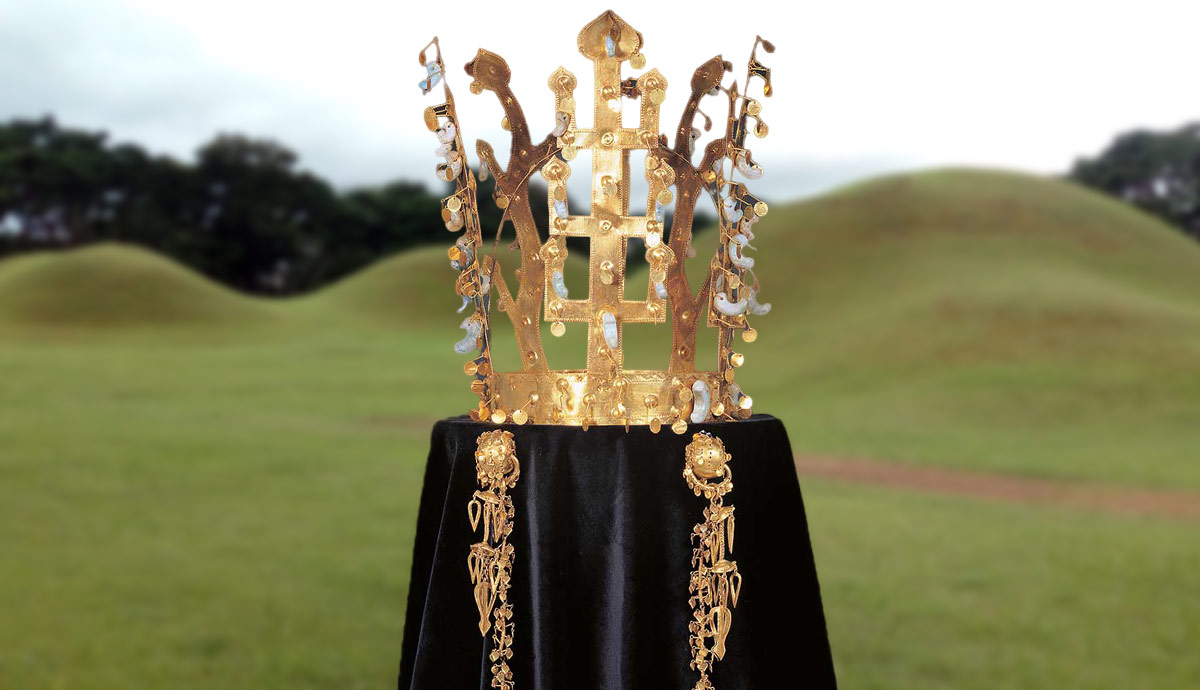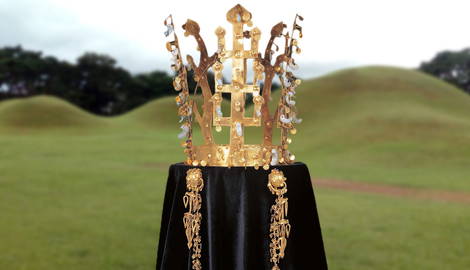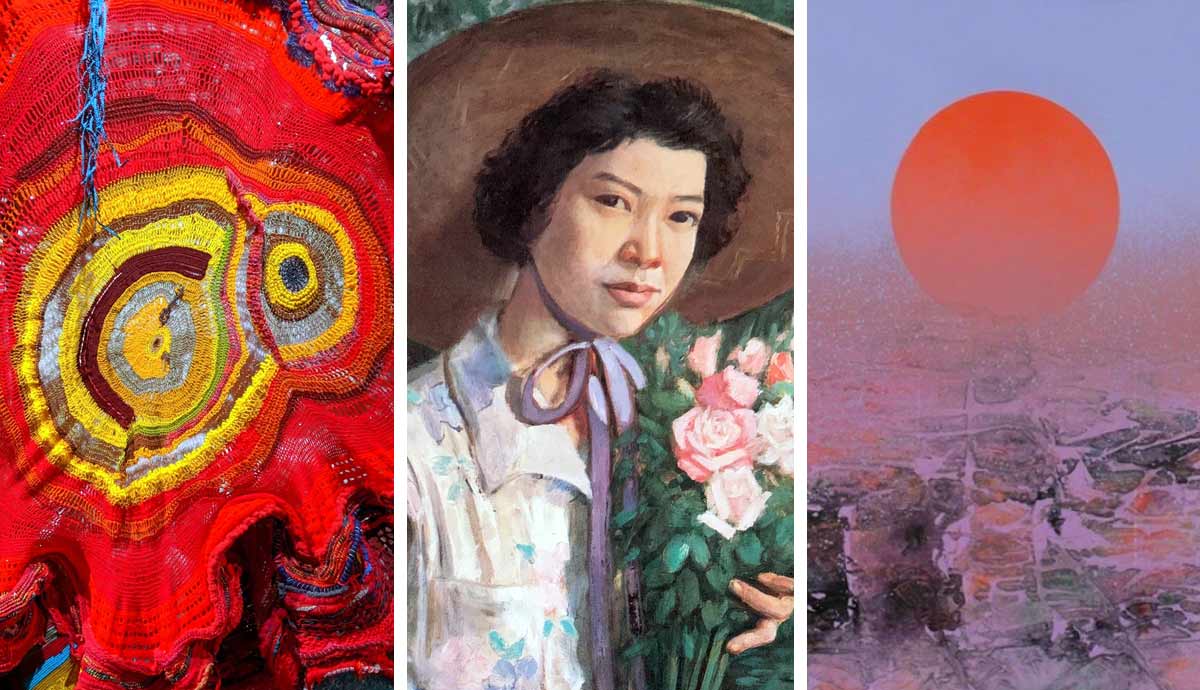
One of the longest-standing dynasties in history, the kingdom of Silla (57 BCE to 935 CE) in Korea is remembered today through its scattered burial mounds. For generations these mounds have preserved the secrets of Korea’s history, hiding valuable treasures within. From crowns to belts and earrings, the archeological finds in these mounds justify the Silla capital Geumsong’s moniker (today, Gyeongju) — the “city of gold.” They reveal much about the society of the Silla Kingdom during this time, including trade relations, religious beliefs, and power dynamics.
The Three Kingdoms Period

During the Three Kingdoms Period in Korea (57 BCE to 935 CE), the Korean peninsula was dominated by three states: Goguryeo in the North, Paekje in the South West, and Silla in the South East. The three groups competed for hegemony in the area, creating alliances and rivalries among themselves, and with China and Japan along the way. There were continual skirmishes between the groups and each kingdom’s borders fluctuated in position over time.
Despite their disputes, the kingdoms were similar in language and culture, sharing the Buddhist religion and a power structure that was centered around the warrior class. They were also influenced culturally by China and Japan — adopting the Chinese writing system, for example, which at the time was the classical Chinese script.
Ultimately, the Silla kingdom was able to overcome the other powers and it totally dominated the peninsula in 668 CE, unifying the country. In absorbing the other states, Silla was able to gain new wealth and power, which informed their lavish burial practices.
The Mysterious Burial Mounds of Silla

Upon visiting Silla’s ancient capital Gyeongju today, you will be struck by the size and quantity of burial mounds that dot the landscape. The larger of these tombs are occupied by powerful monarchs and other royalty, with the smaller ones reserved for members of the aristocracy. Their extravagance and imposing nature remind us of the power and wealth that their occupants once held.
Within these mounds of stones and earth are wooden tombs sealed with clay. This makes for an almost impenetrable structure, with the force of gravity and the weight of soil pushing the tomb further into the ground over time, protecting it from grave robbers.
These tombs not only held the remains of the deceased but also a plethora of treasures, many of which were specifically created to reside with the dead in their new home. Many of these treasures are made from gold. Crowns, belts, jewelry, and other regalia have all been found in the tombs. They stand as a testament to the kingdom’s prosperity and its investment in arts and culture.
Golden Crowns

The crowns found in the burial mounds are, as in most other places, markers of royalty. They are made from gold, with jade embellishments, and have two antlers and three tree shapes protruding from a band. The antlers and trees link the crowns to shamanism, emphasizing the power of the rulers.
The appeal of gold began with trade connections with China, from which it was imported. Gold was later found in abundance in the capital city of Gyeongju, located in the sand of local rivers. It was also easy to work with, making it the perfect material with which to shape the delicate crowns. The crowns themselves are made from a thin sheet of gold, which is impractical to wear. This has caused many to believe that the crowns were intended for burial purposes only.
Korean Shamanism

As mentioned, the design of the crowns alludes to a connection between the rulers and shamanism. Korean shamanism dominated the peninsula at the time. As we shall see, the crowns were unlikely to have been worn while the rulers were alive, suggesting they were designed solely for use in the afterlife. Rulers were expected to have special spiritual powers, with the gold of the crowns acting as a halo, showing their spiritual authority.
The trees link with the tree of life, the connector between the three spiritual worlds of the underworld, the earthly world, and the upper world. The curved, jade beads on the crowns were commonly used to represent spiritual power on the peninsula from the Bronze Age onward. It has been suggested that they are similar to the teeth or claws of wild animals, further connecting the crowns to shamanism.
Shamanism has a strong connection with animism. Both share a belief that chosen practitioners can connect with unseen spirits, which hold control over the material world.
Their practices included song and dance rituals, as well as the drinking of rice wine. Shamans were believed to be able to see the future based on the appearance of nature. It is also important to note that with the arrival of Buddhism in the mid-6th century CE, shamanism did not disappear, and its beliefs have been practiced in Korea to this day.
Gender and Artifacts

Inheritance ran both through the female and male lines, and queens ruled equally to kings in Silla. Gender equality extended to the rest of society, too. They operated on a caste system, called “bone ranks,” which segregated people based on birth (particularly within the aristocracy) rather than gender. Queen Jinseong, for example, was the last ruler of Silla. She continued the kingdom’s alliance with Tang Dynasty China (618 – 907 CE), encouraging bilateral trade. However, during her reign factions began to rebel which led to the collapse of Silla society.
Archeologists use the artifacts found in the burial mounds to gender the ruler confined there. In Tomb 98 (of 155), a golden belt was found which was inscribed with the words “belt for milady,” among other artifacts believed to be attributed to the royals including crowns. From this and other similar findings, archeologists have deduced that women were able to hold power similarly to men.
Other Notable Accessories

A large number of gold earrings have been found in the Silla tombs. They are diverse in style but are classified into two types — those with a thick central ring versus those with a thin one. Some are small and simple, others large and intricate. Their elaborate and detailed nature reveals the great amount of skill required to craft them. Decorated with spangles, gold granules, and embossing, the beauty of the Silla earrings is undeniable.
Archeological finds in the burial mounds are not limited to gold and jade. Chest pendants, worn over the chest and back, share in the extravagance of the other accessories found in the tombs. Hanging jade ornaments are attached to gold and glass beading.
Belts, rings, vessels, and swords, to name just a few items, were also found within the burial mounds. There is also evidence of human sacrifice, with multiple different human remains found at the sites in Gyeongju. This alongside Korean folklore about Inju practice—the ritual killing of people to satisfy the Gods—suggests that this was something typical for the period.

The mysterious-looking burial mounds of the Silla Period contain fascinating treasures that have many stories to tell about this transformative time in Korea’s history. Gender, spirituality, and power are just some elements of Silla’s society that we can gain insight into when examining the tombs.
Of course, we have also come to understand much about the Silla peoples’ burial practices; they buried a plethora of treasures with their rulers’ remains while creating a mound-like shape to protect them. The gold crowns, in particular, show the role of shamanism in society and its connection with power through their imagery. Alongside other objects, they suggest that gender was not a determiner of power during this period.
With the arrival of Buddhism in the Silla Kingdom in the mid-6th century CE, the practice of burying rulers in mounds began to disappear in favor of cremation. As a result, Silla craftsmanship from this period can be seen more in treasures found in temples. Despite these changes, the objects found in the burial mounds are undeniable markers of the skill of metalworkers from the Silla Period. Their discovery has made a huge contribution to Korean cultural heritage, and with some sites still unexcavated, there is still more to learn.
Further Reading
Milledge Nelson, Sarah, Gyeongju Capital of Golden Silla, 2017, Routledge: New York.










